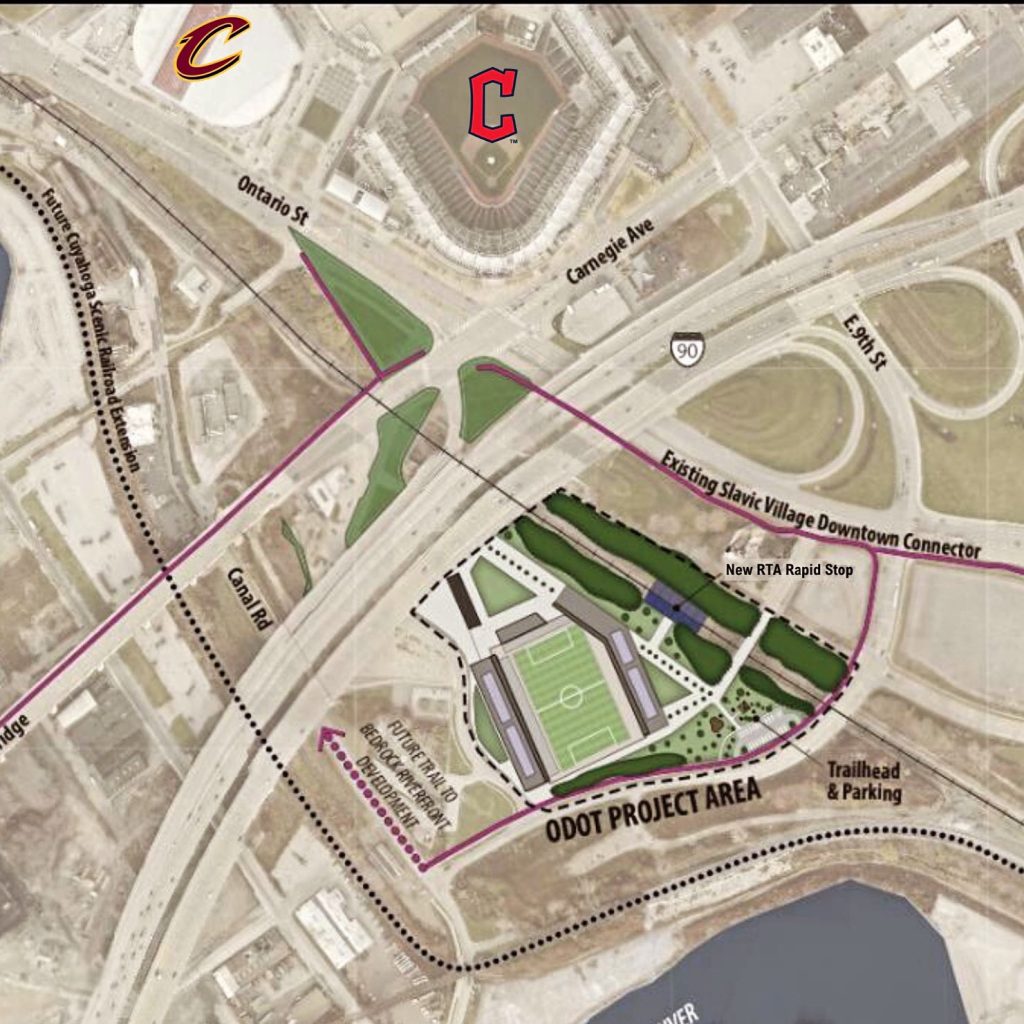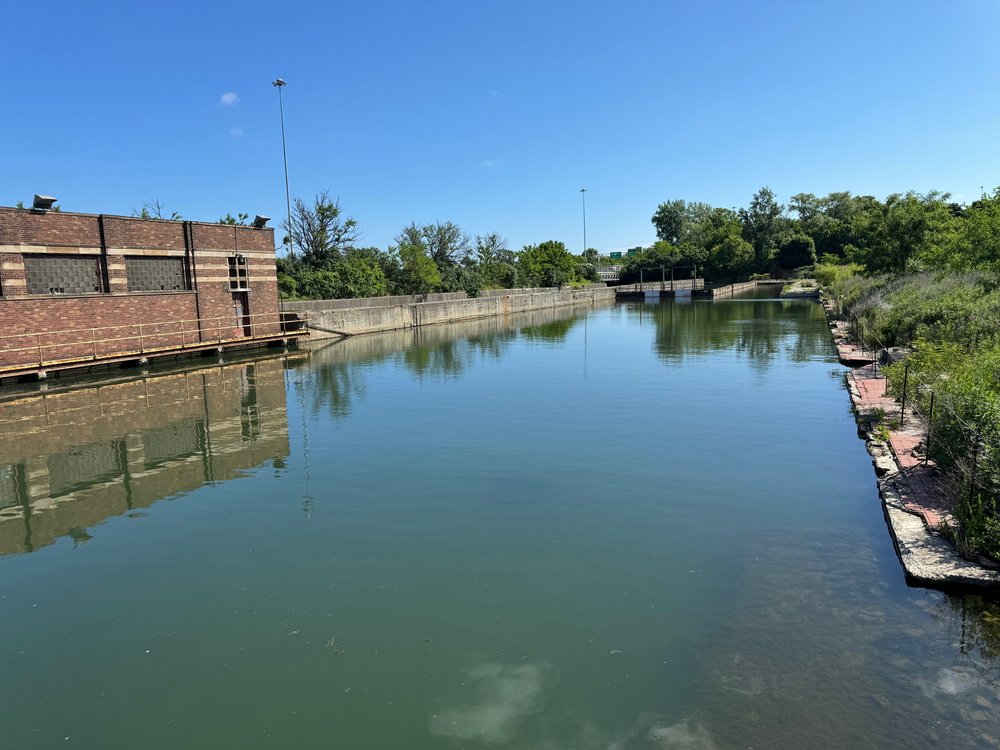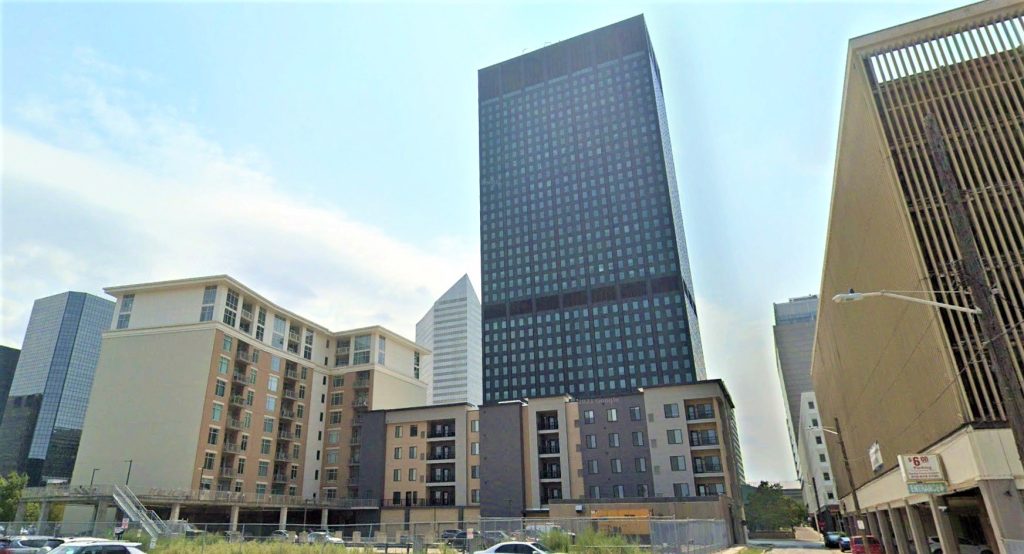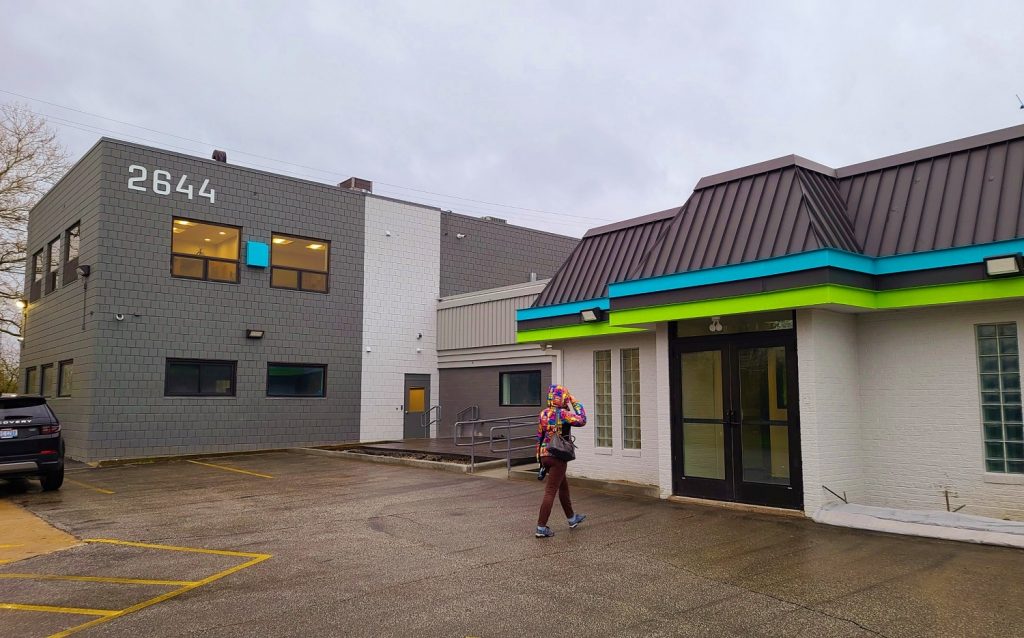$150M stadium planned as South Gateway
Backers of a long-proposed soccer stadium in Downtown Cleveland have issued renderings, a video and a request for $90 million in public-sector financing to help support a $150 million, 12,500-seat stadium. The request is being publicized now because backers of the project are submitting a bid for a National Women’s Soccer League (NWSL) team next month and a stadium is an essential ingredient of the application.
The backers are led by Cleveland Soccer Group owners Michael Murphy, co-founder & CEO, and Nolan Gallagher, co-founder & president. They have already secured a Major League Soccer (MLS) NEXT Pro developmental league team, to start play in 2025, and want to add a NWSL team starting in 2026. The stadium could also host soccer games for area universities and high schools along with concerts and other outdoor events.
That’s not all. The group is also seeking a $133 million, privately funded training facility for the incoming MLS NEXT Pro team and, potentially, for the NWSL team. To top it off, the Gateway South facilities, located next to the shared tracks of the Red, Blue and Green light-rail lines, could also be served a new station. A video presentation of the proposed stadium is available here.
The South Gateway stadium is planned to be located immediately south of the Inner Belt highway (Interstate 90), Rocket Mortgage FieldHouse and Progressive Field. Murphy and Gallagher said the stadium would mark a milestone as the nation’s first private-public partnership dedicated to a sports facility with women’s sports at its core. The stadium is expected to host more than 60 diverse events annually.
“The global rise of women’s sports presents a tremendous opportunity for Cleveland. The time is ripe to seize this moment,” Murphy said in a written statement. “We’ve made significant strides and there’s tangible momentum. We are leveraging sports to create economic impact and to inspire young female athletes for generations to come.”
With the NWSL bid due in the next month, Murphy said their efforts to bring women’s soccer to Cleveland have reached a critical juncture. A new stadium solution is a cornerstone requirement of the bid.
“Two years ago, we made it to the final four of 82 groups nationwide that expressed interest,” he said. “That experience clearly communicated that without a viable, soccer-centric stadium plan, there is no opportunity for top-tier professional soccer in Cleveland. Over the past two years, we’ve engaged in dozens of discussions with our elected officials. It’s imperative we swiftly finalize a comprehensive stadium plan. The window of opportunity for Cleveland to win a team is narrowing.”
The proposed South Gateway Stadium would transform underutilized land, formerly used as Norfolk Southern intermodal truck-train rail yard before it relocated in the mid-1990s to Maple Heights. Portions of the site are now used as parking for Progressive Field employees and overflow stadium parking. The addition of a rapid transit station could alleviate the need for some of that. Much of the land today is owned by the Ohio Department of Transportation.
Constructing a soccer stadium could complete the original Gateway urban development vision from the 1990s. That included building a football stadium here but now the Browns are looking elsewhere. The new soccer stadium would have capacity for 12,500 and could be expanded as ticket demand grows.
“Thirty years ago, local elected officials made a game-changing decision to support Jacobs Field and Gund Arena,” Murphy said. “That decision transformed Gateway from surface parking lots to the region’s largest entertainment and hospitality destination enjoyed by millions annually. This soccer stadium project would be another huge step to build on the momentum of the visionary Shore to Core to Shore development plan for Downtown Cleveland.”
Soccer’s global popularity, coupled with the incredible growth of women’s sports, positions Cleveland to be at the forefront of economic opportunity. The soccer stadium is anticipated to generate $4.1 billion in economic activity through the first 30 years of operation. By comparison, the Women’s NCAA Final Four, which featured a sold-out Rocket Mortgage Fieldhouse and a record shattering viewership of 18.9 million nationally, produced $25 million in economic impact for Northeast Ohio.
“Cleveland is one of the greatest sports cities in America, but we lack professional women’s sports,” said Laura Bloomberg, president of Cleveland State University. “The proposed venue would certainly benefit inner-collegiate athletics generally and our student-athletes in particular to have this opportunity in our city. It’s time to make women’s sports – and soccer – part of this community’s legacy and invest in it, as we have for men’s sports.”
Last October, Cleveland Soccer Group announced its Back the Bid campaign to demonstrate local demand for women’s professional sports in the region. More than 13,000 season tickets have been pledged, outpacing the planned initial capacity for the venue and sending an unmistakable signal to the NWSL that Cleveland will support professional women’s soccer.
CSG engaged Project Management Consultants to develop the economic impact study. CSG also showed that the value capture of $7 million in new city, county and state tax revenues resulting from the project could support a $90 million bond issue to fund the stadium. Plans for a soccer stadium have percolated for years but took a time out during the pandemic.
“We appreciate elected officials’ support and partnership in collaborating on the time-sensitive financing package. We are cognizant of numerous needs around the region, but this project highlights support for women’s athletics, will deliver considerable ROI for the entire region and fulfill the promise of South Gateway,” said Murphy.
He noted that Cleveland is the only top-20 market without men’s or women’s outdoor professional soccer. Organizers say bringing women’s soccer to Cleveland isn’t just creating a team but elevating the city’s national and international profile, providing enduring marketing opportunities for Northeast Ohio.
“As we have already seen, during the RNC, NBA finals, NCAA Women’s Final Four, when the national spotlight is on us, we rise to the occasion,” said David Gilbert, CEO of the Greater Cleveland Sports Commission. The events are being broadcast in hundreds of countries, allowing us to showcase Cleveland to the world.”
Over the last 30 years, men’s professional sports in the state of Ohio have received $2 billion in public support for facilities. Women’s professional sports have received zero, backers pointed out.
“Reflecting on the transformative power of Gateway, we recognize the pivotal role sports facilities play in shaping our city’s landscape,” Gilbert added. “By bringing women’s soccer to Cleveland, we’re not just investing in a game. We’re investing in a future. Our track record of leveraging sports infrastructure for economic growth speaks volumes, and this can build on that momentum.”
END








